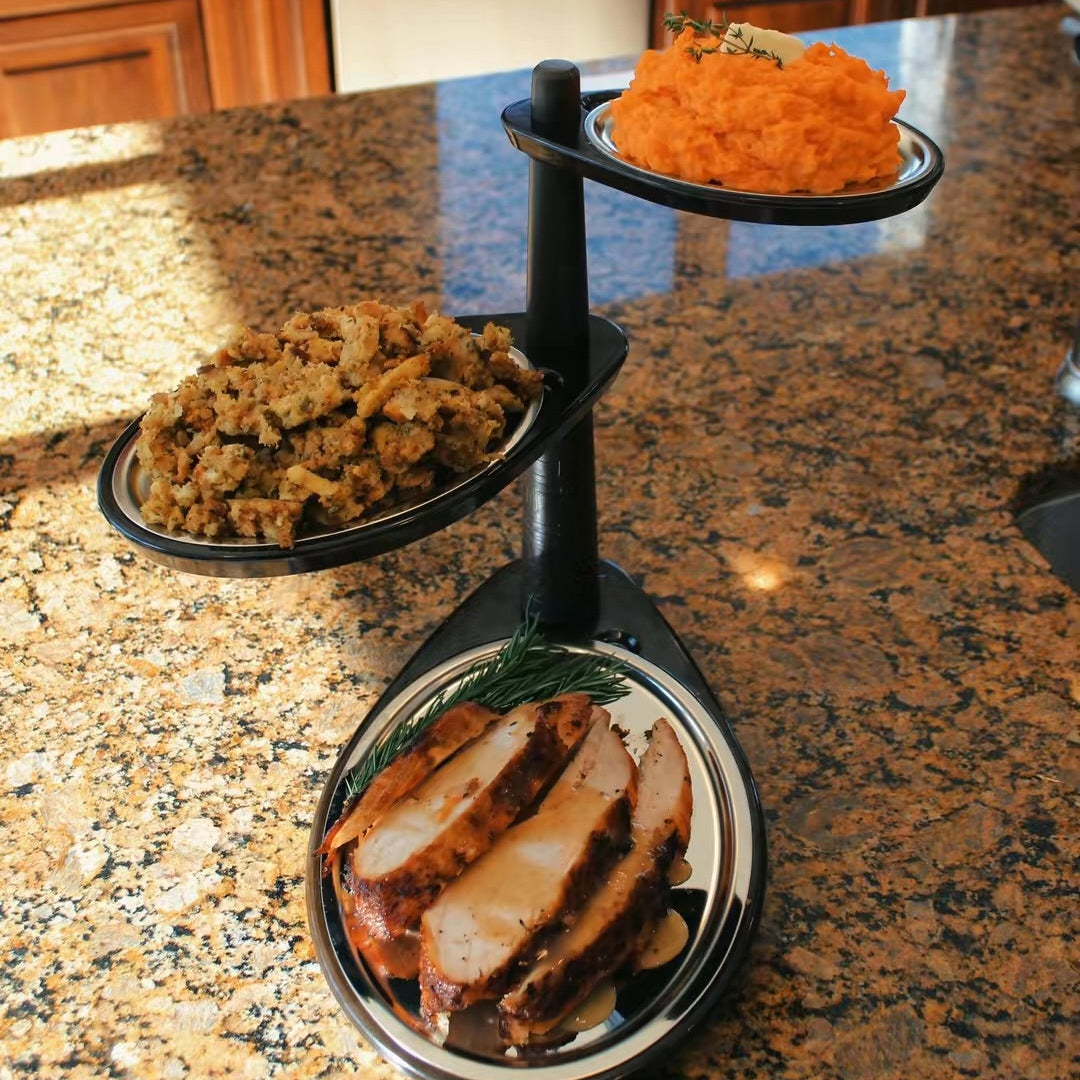
Eating Together Matters More Than Ever
Your Modern Guide to Reclaiming Connection, One Meal at a Time
The Lost Art of Shared Meals
Not long ago, families gathered around dinner tables, friends lingered over long
lunches, and neighbors connected through good food with great conversation. After the pandemic, life has sped up drastically. Our plates are once again full, but our lives are fragmented, one could say off-kilter.
According to the 2025 World Happiness Report, 26% of U.S. adults said they ate all of their meals alone on the previous day. Meanwhile, a Child Trends “Shared Meals” report found that only 53% of families eat together 6–7 days a week, and that number continues to fall each year.
We’re eating more than ever before, but connecting less; between grab-and-go meals, screens at the table, and busy schedules, food has become transactional
instead of transformational.
At a time when mental health is waning and families are struggling to understand one another, it’s even more important to sit around the table and prioritize real discussion while enjoying interactive, shareable meals.
The Science Behind Shared Meals
Research consistently shows that eating together benefits physical, mental, and
emotional well-being:
- Children who eat with their families regularly are more likely to have higher academic performance, improved self-esteem, and healthier eating habits.
- Adults who share meals report higher levels of happiness and lower levels of stress and loneliness.
- Couples and families who make mealtimes intentional experience stronger communication and deeper bonds.
When we sit together, our minds and bodies release oxytocin (the “connection hormone.”)
When we eat alone, our brains miss out on those subtle but powerful cues of belonging.
Why Connection Feeds Us
Humans are wired for connection. Food isn’t just fuel; it’s a shared experience that ties memory, identity, and culture together. A homemade soup can say “I love you.” A family recipe can bridge generations. These times are peppered with stories of loved ones, woven with silly and serious moments that younger generations crave.
In my experience, I’ve seen again and again that how we eat is as important as what we eat. A visually appealing table, a colorful salad with fresh herbs, and beautiful plating naturally invite conversation and a sense of comfort.
When meals look good, we eat mindfully. We slow down. We notice. And that simple act of attention nourishes us far beyond calories.
The Visual Power of Gathering
We eat first with our eyes. Studies show that a beautifully arranged presentation can increase appetite by up to 20% and improve satisfaction, even when the ingredients are simple.
That’s where tools like the Totem's 3-tier serving tray come in: a stackable, elegant, and functional centerpiece that turns any meal into a shared event.
Its vertical design makes food presentation effortless and eye-catching, transforming Taco Tuesdays into a moment worth savoring.
Whether it’s a family fajita night, a brunch with friends, or a holiday spread, great presentation isn’t just for appearance but for connection as well. When people see food displayed beautifully, they lean in, ask questions, and share stories. That’s where connection starts.
Small Rituals, Big Impact
You don’t need a three-course meal to create meaningful moments. Try these simple rituals to bring back the magic of shared eating:
- Set the table intentionally.
Create space for guests to breathe and be creative with the atmosphere! Even a candle or cloth napkin signals that the meal matters.
- Put away devices.
Eye contact is the best ingredient for connection.
- Rotate meal themes.
Taco Tuesdays, Soup Sundays, or Friday grazing boards create rhythm and anticipation.
As a teenager, I remember my mom creating a “happy hour” for my grandparents, serving them their favorite meat and cheese tray before dinner. It felt exciting and special just renaming the food.
- Ask open-ended questions to everyone at the table.
“What’s one good thing from your day?” or “What is something that surprised you today? sparks conversation and reflection.
- Keep conversation positive. This should be a time for comfort and companionship.
If some issues or challenges need to be discussed, set them aside for another time.
Connection thrives on repetition. Small, consistent rituals build lifelong habits of presence.
A Call to the Table
We can’t control everything in the world, but we can choose to sit down together.
When we reclaim our tables, we reclaim our relationships. We remind ourselves that time spent eating together isn’t wasted; it’s invested. It’s how we teach our children to listen, how we show love without words, and how we heal from the noise of the day.
My opinion? The simple act of eating together might be the most profound form of self-care left in our modern world.
So tonight, set the table. Light a candle. Invite someone to join you. Use your Totem to elevate not just your food, but your conversations, the laughter, and the memories that follow.
Because in a world where people are eating more often but connecting less,
togetherness at the table might be the revolution we need.
"The family table is the center of life. It’s where memories are made, values are passed down and traditions are born." – Breanne S.
About the Author
Breanne Stuart is a food and family advocate, entrepreneur, and co-founder of Totem Serve. She believes in the power of intentional gatherings to strengthen families, nourish relationships, and build community; one shared meal at a time.

